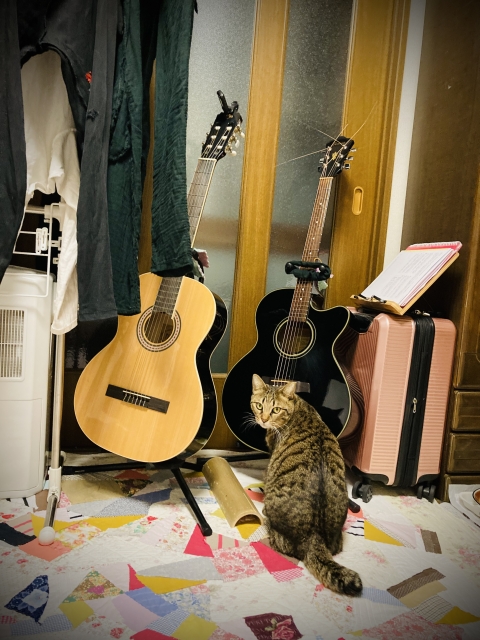This time we will introduce Am and G and Dm and E as examples of minor chord progressions.
G is covered in Parts 2 and 3, and Am is covered in Part 3, so please refer to those as well.
The relationship between Am (A minor) and C is as follows.
Am⇒minor
Both patterns do not have # (sharp) or ♭ (flat) in the sheet music.

If you want to enlarge the image, if you are using a computer
⇒ Open the image in a new tab
For smartphones
⇒ Swipe
Am is similar to the chord form of C
The Am low chord is played in the following way.

5th string open
4th string 2nd fret ⇒ middle finger
3rd string 2nd fret ⇒ Ring finger
2nd string 1st fret ⇒ index finger
1st string open
There are two ways to play the “G” low chord
Pattern ①

5th string 2nd fret ⇒ index finger
4th string open
3rd string open
2nd string 3rd fret ⇒ Ring finger
1st string 3rd fret ⇒ little finger
Pattern ②
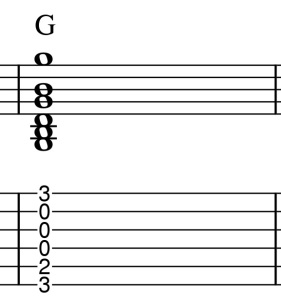
5th string 2nd fret ⇒ middle finger
4th string open
3rd string open
2nd string open
1st string 3rd fret ⇒ little finger
Dm
Dm (D minor) is obtained by removing the 7th note (C) from the Dm7 discussed in Part 3.
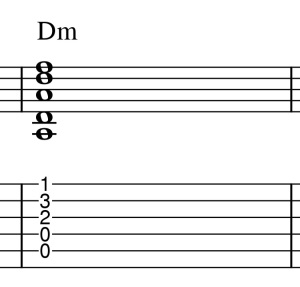
4th string open
3rd string 2nd fret ⇒ middle finger
2nd string 1st fret ⇒ Ring finger
1st string 1st fret ⇒ index finger
E
The “E” chord is a chord that feels comfortable when the 6th string is open.
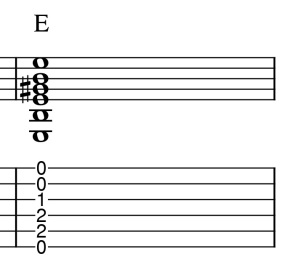
5th string 2nd fret ⇒ index finger
4th string 2nd fret ⇒ middle finger
3rd string 1st fret ⇒ index finger
2nd string open
1st string open
If the third note is G (G), it is “Em” (E minor).
*3rd string open sound
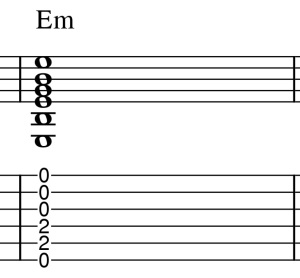
If the third note is G# (G#), it becomes “E”.
*3rd string 1st fret sound

Summary
So far, you have memorized eight chords: G, Em, C, D, Am, Dm7, Dm, and E.
First, let’s memorize the chords one by one.
Thank you for reading to the end.
All the music scores on this site were created by myself using Muse Score.
Unauthorized reproduction of sheet music and articles is prohibited.
Image source: photo AC
https://www.photo-ac.com/
To listen to the song, click “Cat Guitar Channel”.
Performance information is Cat Guitar Channel Performance Information Please check.


